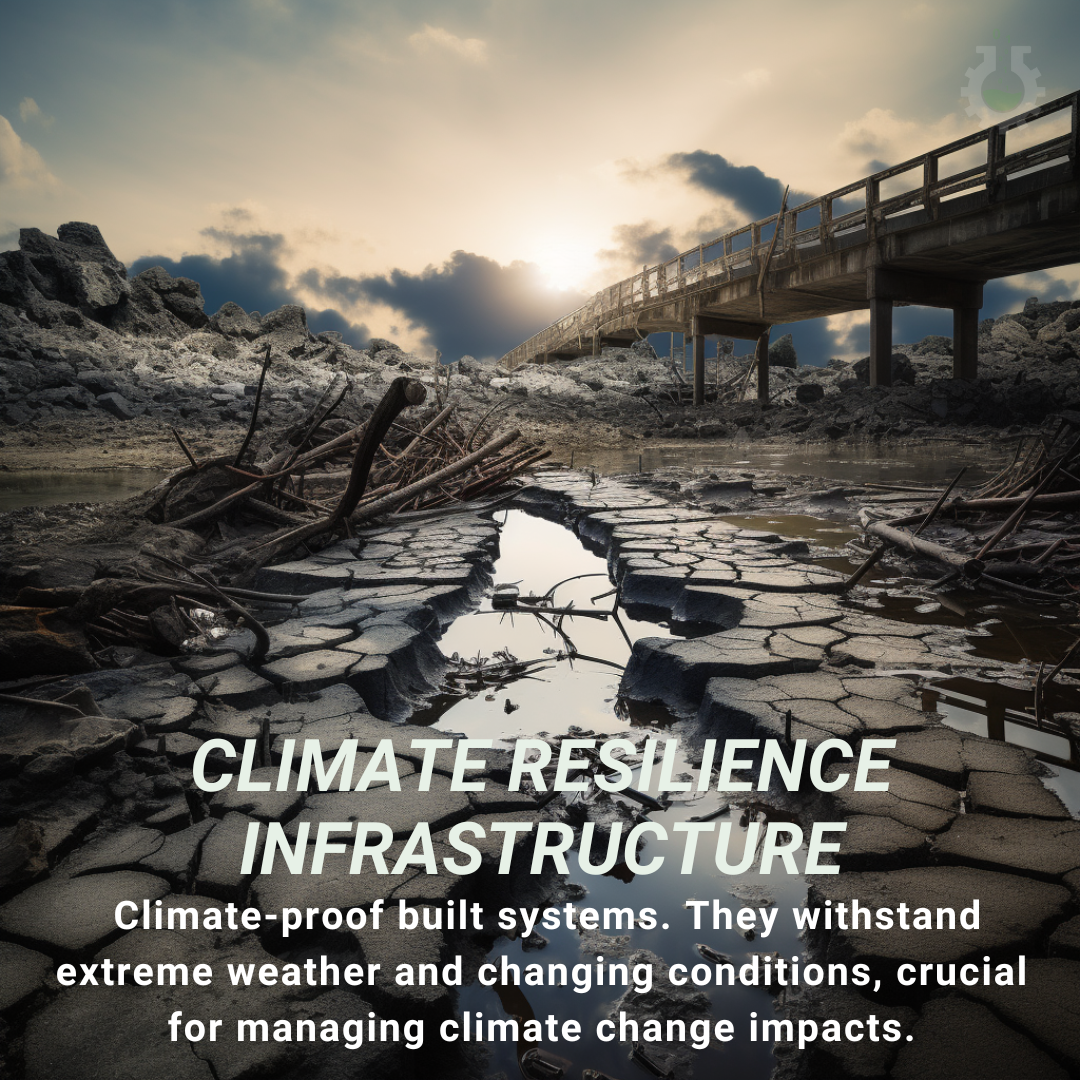November 2, 2023
Climate Change Poster Collection of the Day – Climate Resilience Infrastructure
Book a Demo
Today’s Climate Change Poster Collection focuses on Climate resilience infrastructure, a critical concept in the discussion of climate change, referring to a system’s ability to endure and recover from natural hazards that are intensified by climate change. This resilience has three main aspects: preparation, adaptation, and recovery.
Investing in climate-resilient construction can prove to be a cost-effective measure. Studies have shown that for every dollar invested in climate-resilient construction, up to $11 can be saved in repair costs over the long-term. This demonstrates the potential value of resilience not just in terms of infrastructure durability, but also in terms of economic savings.
The role of the government is pivotal in promoting and advancing climate-resilient infrastructure. They can enforce regulations, offer tax benefits, provide grants, and even buy-out properties for the purpose of climate change preparation or relocation away from structures vulnerable to climate change. These interventions can significantly motivate the adoption of climate-resilient construction practices.
In addition, communication and education are essential tools in enhancing public awareness about the benefits of climate resilience. They can help foster a proactive approach in the society towards climate change, and encourage policymakers to invest more in resilient construction.
Institutions like the Asian Infrastructure Investment Bank (AIIB) are already playing a significant role in promoting climate resilience. AIIB assists its partners in “climate-proofing” their infrastructure projects by incorporating climate resilience features directly into the project design.
There are several climate change adaptation measures that can be adopted to make infrastructure more climate-resilient. These can include rehabilitating water systems, investing in energy efficiency, and exploring design alternatives that mitigate climate-related risks.
The importance of increasing infrastructure resilience to protect the economy and future growth is highlighted in the document “Climate Resilient Infrastructure: Preparing for a Changing Climate”. This document identifies key players, challenges, and potential opportunities in climate change infrastructure adaptation. It underscores the need for adaptation investment and potential economic opportunities, outlining how Governments can assist in realizing a climate change resilient infrastructure network.
Climate resilience is an essential strategy to combat the adverse effects of climate change, with potential benefits for both our environment and economy. It requires concerted efforts from various stakeholders, including government, businesses, and individuals, to ensure a more sustainable future.
Discover an inspiring collection of climate change poster.



